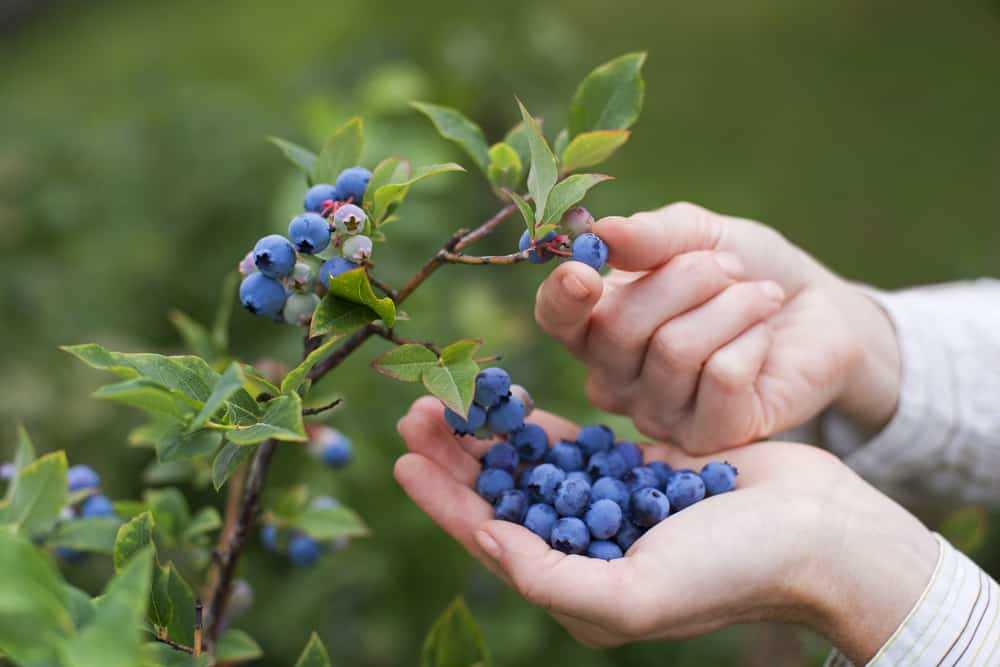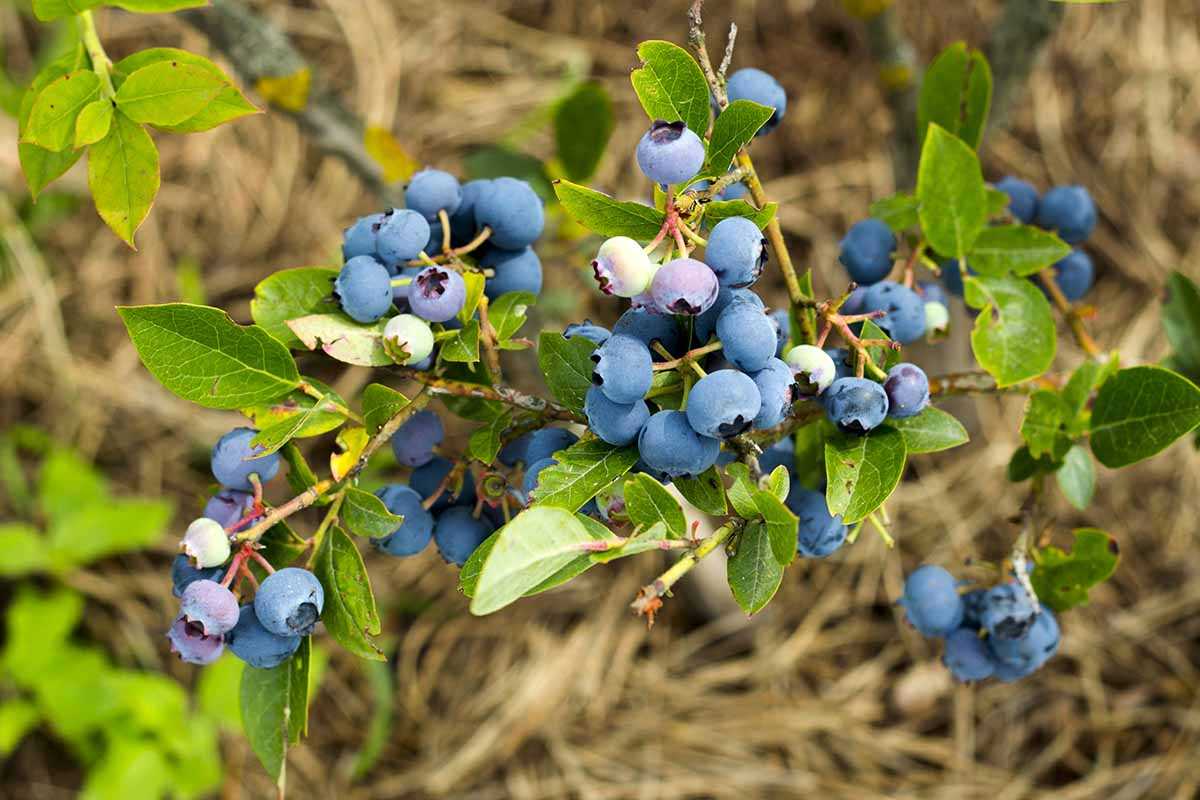- Blueberry Planting Mistakes: What You Should Know
- 1. Choosing the Wrong Variety
- 2. Planting in Unsuitable Soil
- 3. Neglecting Soil Preparation
- 4. Improper Plant Spacing
- 5. Failing to Provide Adequate Sunlight
- 6. Neglecting Regular Irrigation
- Selecting the Right Variety
- Soil Preparation and pH Levels
- Test the Soil pH Level
- Adjusting Soil pH
- Organic Matter and Drainage
- Weed Control
- Considerations for Container Planting
- Sunlight and Location
- Watering and Drainage
- 1. Watering frequency
- 2. Irrigation methods
- 3. Mulching
- 4. Drainage considerations
- 5. Avoid overwatering
- Fertilization and Nutrient Needs
- Soil Testing
- Nitrogen
- Phosphorus and Potassium
- Micronutrients
- Pruning and Training Techniques
- 1. Winter Pruning
- 2. Selective Pruning
- 3. Renewal Pruning
- 4. Training Techniques
- 5. Maintenance Pruning
- Conclusion
- Pest and Disease Control
- Pesticides
- Integrated Pest Management (IPM)
- Common Pests and Diseases
- Harvesting and Storage Tips
- 1. Harvesting
- 2. Storage
- 3. Additional Tips
- Questions and Answers:
- What are some common mistakes to avoid when planting blueberries?
- What kind of soil do blueberries need to grow well?
- Can blueberries tolerate full sunlight?
- Do blueberries need a pollinator to produce fruits?
- What is the ideal spacing between blueberry plants?
- Can blueberries be grown in containers?
- How long does it take for blueberry plants to start producing fruits?
- Videos: 5 Tips to Grow Lots of Blueberries

Blueberries are a popular fruit known for their sweet and tart flavor, as well as their numerous health benefits. Whether you are an experienced gardener or a novice, successful planting of blueberries requires careful consideration of several key factors. By learning from the mistakes of others, you can ensure that your blueberry plants thrive and produce an abundant harvest.
Choosing the Right Variety: One of the most important considerations when planting blueberries is selecting the right variety. Blueberries come in different varieties, each with their own unique characteristics. Some varieties are better suited for certain climates or soil types, while others may be more disease-resistant. By choosing a variety that is well-suited to your specific conditions, you can increase the chances of successful growth and fruit production.
Understanding Soil Requirements: Blueberries have specific soil requirements, which is another critical factor to consider. These plants require an acidic soil with a pH level between 4.0 and 5.5. Additionally, blueberries prefer soil that is rich in organic matter and well-draining. Before planting, it is essential to test the soil pH and make any necessary amendments to ensure optimal growing conditions.
Proper Plant Spacing and Layout:
The spacing and layout of your blueberry plants can greatly impact their overall health and productivity. Blueberries should be spaced adequately to allow for good air circulation and sunlight penetration. The spacing requirements may vary depending on the specific variety you choose, so be sure to research the recommended spacing guidelines for your selected variety. Additionally, consider the layout of your blueberry plants to promote efficient pollination and easy maintenance.
Blueberry Planting Mistakes: What You Should Know
Whether you are a novice gardener or an experienced one, it’s important to be aware of the common mistakes that can be made when planting blueberries. By avoiding these mistakes, you can increase your chances of a successful crop and enjoy delicious, plump blueberries in your garden.
1. Choosing the Wrong Variety
Not all blueberry varieties are suitable for every climate and soil type. It’s important to research and choose a variety that is well-adapted to your specific growing conditions. Consider factors such as chill hours, heat tolerance, and soil pH requirements.
2. Planting in Unsuitable Soil
Blueberries prefer acidic soil with a pH between 4.5 and 5.5. Planting them in soil with a higher pH can lead to nutrient deficiencies and poor growth. Before planting, it’s essential to test your soil’s pH and amend it if necessary with materials like elemental sulfur or peat moss.
3. Neglecting Soil Preparation
Proper soil preparation is crucial for blueberry plants to thrive. Before planting, remove any weeds and grass from the planting area. It’s also recommended to incorporate organic matter like compost or aged manure to improve the soil’s fertility and drainage.
4. Improper Plant Spacing
Blueberry plants need adequate space to grow and spread their roots. Planting them too close together can lead to overcrowding, which can result in poor airflow and increased risk of diseases. Follow the recommended spacing guidelines provided by the blueberry variety you choose.
5. Failing to Provide Adequate Sunlight
Blueberries require full sun to produce abundant fruits. Planting them in shaded areas or areas with insufficient sunlight will result in weak growth and poor fruit production. Ensure your planting area receives at least 6-8 hours of direct sunlight daily.
6. Neglecting Regular Irrigation
Blueberry plants have shallow roots and require consistent moisture to thrive. Neglecting regular irrigation can lead to drought stress and reduced fruit production. Water deeply and frequently, especially during dry spells, and ensure proper drainage to avoid waterlogged conditions.
Avoiding these common blueberry planting mistakes will help set your plants up for success. With proper care and attention, you can enjoy a bountiful harvest of juicy, flavorful blueberries from your own garden.
Selecting the Right Variety
The success of your blueberry planting project largely depends on selecting the right variety. Blueberries come in different varieties, and each variety has its own characteristics and requirements. It’s important to choose a variety that is well-suited to your climate, soil conditions, and growing preferences.
Consider the following factors when selecting a blueberry variety:
- Climate: Blueberries have specific climate requirements and not all varieties are suitable for all regions. Some varieties are better suited for colder climates, while others thrive in warmer areas. Identify the climate conditions in your region and choose a variety that can withstand the winter temperatures and summer heat.
- Chill Hours: Blueberries require a certain number of chill hours to properly set fruit. Chill hours refer to the cumulative number of hours below a certain temperature range during winter dormancy. Different varieties have different chill hour requirements, so make sure to choose a variety that matches the chill hours in your area.
- Soil pH: Blueberries prefer acidic soil with a pH level between 4.5 and 5.5. Before selecting a variety, test your soil’s pH and make any necessary adjustments to ensure it falls within the optimal range. Some blueberry varieties are more tolerant of different soil pH levels, so consider this factor when making your selection.
- Growing Season: Blueberry varieties have different ripening seasons, ranging from early to late. Consider the length of your growing season and choose a variety that fits within that timeframe. This will ensure you can harvest the berries at their peak ripeness.
- Taste and Texture: Blueberry varieties can vary in taste, texture, and sweetness. Some may have a tangier flavor, while others are sweeter. Consider your personal preference and intended use for the berries, such as fresh eating or baking, when selecting a variety.
- Disease Resistance: Certain blueberry varieties are more resistant to common diseases, such as powdery mildew or fruit rot. If you live in an area prone to specific diseases, choose a variety that has shown resistance to those diseases to increase the chances of a successful harvest.
Consult with local horticulture experts, nurseries, or agricultural extension offices for recommendations on suitable blueberry varieties for your specific region. They can provide valuable insights based on their knowledge of local conditions and experiences. Taking the time to carefully select the right variety will greatly increase your chances of a successful blueberry planting project.
Soil Preparation and pH Levels
Proper soil preparation is crucial for successful blueberry planting. Blueberries prefer acidic soil with a pH level between 4.5 and 5.5. Here are some key considerations for preparing the soil:
Test the Soil pH Level
Before planting blueberries, it is essential to test the soil pH level. This can be done using a soil testing kit available at gardening stores or by sending a soil sample to a laboratory for analysis. The pH level determines the availability of essential nutrients to the plant. If the pH level is too high, it can result in poor plant growth and nutrient deficiencies.
Adjusting Soil pH
If the soil pH level is too high, it can be adjusted by adding sulfur or other acidic amendments such as pine needles or peat moss. These amendments help in lowering the pH level and creating the acidic conditions preferred by blueberries. It is important to add the amendments well in advance of planting, as it may take several months for them to take effect.
Organic Matter and Drainage
Blueberries thrive in soil that is rich in organic matter and well-drained. Adding organic matter such as compost or aged manure helps improve soil fertility and moisture retention. It also promotes beneficial microbial activity in the soil. Ensuring proper drainage is essential as blueberries are susceptible to root rot and other diseases if the soil remains waterlogged for extended periods.
Weed Control
Before planting, it is important to remove any existing weeds or grass from the planting area. Weeds can compete with blueberry plants for nutrients and water, affecting their growth and productivity. Using mulch or weed barriers after planting can help suppress weed growth and maintain a clean planting area.
Considerations for Container Planting
If planting blueberries in containers, it is important to use a well-draining potting mix specifically formulated for acid-loving plants. Regular potting soil is often too alkaline for blueberries. Additionally, containers should have adequate drainage holes to prevent waterlogging.
By properly preparing the soil and maintaining the appropriate pH levels, blueberry plants can thrive and produce a bountiful harvest. It is important to regularly monitor and adjust the soil pH as needed to ensure optimal conditions for the plants.
Sunlight and Location
When it comes to planting blueberries, one of the most important factors to consider is sunlight. Blueberries thrive in full sun, which is generally defined as at least six hours of direct sunlight each day. While they can tolerate partial shade, their productivity and overall health will be compromised if they do not receive enough sunlight.
When selecting a location for planting blueberries, it is crucial to find a spot that receives ample sunlight throughout the day. Ideally, this spot should not be shaded by buildings, trees, or other structures that may obstruct the sun’s rays. A south-facing area is usually the best choice, as it will receive the most sunlight during the day.
In addition to sunlight, it is also important to consider the soil type and pH level of the planting location. Blueberries prefer acidic soil with a pH level between 4.5 and 5.5. If the soil is not naturally acidic, it can be amended with additives such as sulfur or peat moss to lower the pH. It is recommended to have the soil tested before planting to ensure that it meets the necessary requirements for blueberry cultivation.
Overall, choosing a sunny location with acidic soil is essential for successful blueberry planting. Proper planning and preparation will help ensure that the plants receive the necessary sunlight and nutrients for optimal growth and productivity.
Watering and Drainage
Proper watering and drainage are essential for the successful growth of blueberries. The following considerations will help ensure optimal water management for your blueberry plants:
1. Watering frequency
Blueberries require consistently moist soil, especially during the growing season. It is important to water them regularly to prevent the soil from drying out. Aim to provide about 1-2 inches of water per week, either through rainfall or irrigation.
2. Irrigation methods
Using drip irrigation or soaker hoses is ideal for blueberries, as they deliver water directly to the roots while minimizing moisture on the foliage. This helps reduce the risk of foliar diseases. Avoid overhead sprinklers, as they can wet the leaves and increase the chances of fungal infections.
3. Mulching
Applying a layer of organic mulch around blueberry plants helps retain moisture in the soil and prevents weed growth. Mulching also acts as an insulator, protecting the roots from temperature fluctuations. Use materials such as wood chips, straw, or pine needles for effective mulching.
4. Drainage considerations
Blueberries prefer well-draining soil to avoid waterlogged conditions, as excessive moisture can lead to root rot and other diseases. If your soil has poor drainage, consider amending it with organic matter or creating raised beds to improve drainage.
5. Avoid overwatering
While blueberries require consistent moisture, overwatering can be just as detrimental as underwatering. Soggy soil can suffocate the roots and lead to root rot. Monitor the soil moisture levels by checking the top few inches of soil regularly. Water only when the soil feels slightly dry.
By paying attention to watering frequency, using appropriate irrigation methods, applying mulch, considering drainage, and avoiding overwatering, you can ensure optimal water management for your blueberry plants. Following these guidelines will contribute to the success and health of your blueberry crop.
Fertilization and Nutrient Needs
Proper fertilization is crucial for the successful growth and development of blueberry plants. Blueberries have specific nutrient requirements, and providing the right amount of nutrients at the right time is essential for optimal plant health. Here are some key considerations for fertilizing blueberry plants:
Soil Testing


- Before fertilizing your blueberry plants, it is important to conduct a soil test to determine the nutrient levels in the soil.
- A soil test will help identify any nutrient deficiencies or imbalances that may affect the growth of the plants.
- Based on the soil test results, you can tailor your fertilization program to meet the specific nutrient needs of your blueberry plants.
Nitrogen
- Nitrogen is one of the most important nutrients for blueberry plants.
- Blueberries have a high nitrogen requirement, especially during the early growth stages.
- It is recommended to apply nitrogen fertilizer in split applications throughout the growing season to ensure a continuous supply of nitrogen.
- However, excessive nitrogen can lead to excessive vegetative growth and may reduce fruit quality, so it is important to avoid over-fertilization.
Phosphorus and Potassium
- Phosphorus and potassium are also important nutrients for blueberry plants.
- Phosphorus helps with root development and overall plant growth, while potassium enhances flower and fruit production.
- It is essential to provide an adequate supply of phosphorus and potassium to blueberry plants, but the requirements may vary depending on the soil test results.
- Regular soil testing will help determine the appropriate amounts of phosphorus and potassium to apply.
Micronutrients


- In addition to the major nutrients, blueberry plants also require various micronutrients for optimal growth.
- Micronutrients such as iron, manganese, and zinc are crucial for blueberry plant health.
- It is important to ensure that blueberry plants have access to these micronutrients, either through natural sources or through fertilization.
- Regular soil testing can help determine the micronutrient content of the soil and guide the application of micronutrient fertilizers if necessary.
Overall, proper fertilization and nutrient management are essential for successful blueberry planting. Understanding the specific nutrient needs of blueberry plants and tailoring the fertilization program accordingly will help ensure healthy plant growth, maximum fruit production, and high-quality berries.
Pruning and Training Techniques
Proper pruning and training techniques are crucial for promoting healthy growth and maximizing yields in blueberry plants. Here are some key considerations:
1. Winter Pruning


Winter pruning is typically done during the dormant season, between late fall and early spring. It involves removing dead or damaged branches, as well as shaping the plant to promote a balanced growth pattern. Pruning also stimulates the development of new shoots and improves air circulation within the plant, reducing the risk of disease.
2. Selective Pruning
Selective pruning involves removing specific branches to improve the overall structure of the plant. This technique helps to maintain an open canopy, allowing sunlight to penetrate and reach the lower parts of the plant. It also helps to remove any weak or crossing branches that can hinder air circulation and promote disease.
3. Renewal Pruning
Renewal pruning involves removing a certain percentage of older wood each year to promote the growth of new, productive shoots. This technique helps to rejuvenate the plant and maintain its vigor. By removing old wood, the plant can allocate more resources to the development of new growth, resulting in increased yields.
4. Training Techniques
Blueberry plants can be trained to a specific shape or form through various techniques, including:
- Central Leader Training: In this technique, a single main stem is selected as the central leader and the lateral branches are pruned to maintain a pyramidal shape.
- Open Center Training: This technique involves removing the central leader and encouraging the growth of multiple main branches, resulting in an open, vase-shaped plant.
- Espalier Training: Espalier training involves training the branches to grow in a horizontal pattern along a wall or trellis.
5. Maintenance Pruning
Maintenance pruning should be done regularly throughout the growing season to remove any diseased, damaged, or overcrowded branches. This helps to maintain plant health and encourages the production of high-quality fruit.
Conclusion
By employing proper pruning and training techniques, blueberry growers can ensure the health and productivity of their plants. Winter pruning, selective pruning, renewal pruning, and proper training methods all play an important role in shaping the plant and maximizing yields. Regular maintenance pruning is also essential for ongoing plant health.
Pest and Disease Control
Pests and diseases can significantly impact the health and productivity of blueberry plants. It is important to implement effective control measures to prevent the spread and damage caused by these issues.
Pesticides
Pesticides are commonly used for pest and disease control in blueberries. However, it is essential to follow safe and responsible pesticide use practices to ensure the health of both the plants and the environment. Here are some key considerations:
- Choose the right pesticide: Different pests and diseases may require different types of pesticides. It is crucial to identify the specific issue and select a pesticide that targets the problem effectively.
- Read and follow labels: Carefully read the labels of pesticides to understand the instructions and safety precautions. Follow the recommended dosage and application methods to avoid any adverse effects.
- Timing is important: Apply pesticides at the appropriate time to maximize their effectiveness. Some pests and diseases may have specific growth stages when they are most vulnerable to control measures.
- Rotate pesticides: Continuous use of the same pesticide can lead to the development of resistance in pests and diseases. Rotate different types of pesticides to prevent resistance and improve control efficacy.
- Monitor and evaluate: Regularly inspect the plants for signs of pests or diseases. Monitor the effectiveness of the control measures and make adjustments if necessary.
Integrated Pest Management (IPM)
Integrated Pest Management (IPM) is an approach that combines various pest control methods to effectively manage pests and diseases. It focuses on minimizing environmental impact and reducing the use of pesticides. Here are some key components of IPM:
- Preventive measures: Implement cultural practices that promote plant health and make it less susceptible to pests and diseases. This includes proper irrigation, fertilization, and pruning techniques.
- Biological control: Encourage the presence of beneficial insects or organisms that can control pest populations naturally. This can be done by providing habitat and food sources or introducing biological control agents.
- Monitoring: Regularly monitor the plants to detect early signs of pests or diseases. This allows for timely intervention and prevents the issue from spreading.
- Thresholds: Establish thresholds for pest populations. Determine the level of pest presence that necessitates action, considering the potential damage and economic impact.
- Selective pesticide use: If pesticide application is necessary, use selective pesticides that target specific pests while minimizing harm to beneficial organisms and the environment.
Common Pests and Diseases
| Pests | Diseases |
|---|---|
|
|
Proper pest and disease identification is crucial for effective control. Consult with local extension offices or horticulture experts to accurately identify and manage specific issues that may be prevalent in your region.
Harvesting and Storage Tips
Once your blueberry bushes are mature and producing berries, it’s time to start harvesting. Here are some tips to ensure a successful harvest and proper storage of your blueberries:
1. Harvesting
- Pick blueberries when they are fully ripe. They should be deep blue in color and easily detach from the plant with a gentle tug.
- Harvest in the morning when the berries are cool, firm, and the sugar content is at its peak.
- Avoid harvesting wet berries to prevent spoilage. Wait until the morning dew has dried off or pick after a rain-free period.
- Use both hands to pick blueberries to minimize any damage to the delicate fruits.
2. Storage
- Store blueberries in the refrigerator to maintain freshness and extend their shelf life. Place them in a shallow container lined with paper towels to absorb excess moisture.
- Avoid washing blueberries before storing, as it can cause them to spoil faster. Rinse them just before using.
- Blueberries can also be frozen for longer-term storage. Spread them out on a baking sheet in a single layer and freeze until firm, then transfer them to a freezer bag or container.
- For optimal flavor and texture, use frozen blueberries within one year of freezing.
3. Additional Tips
- Sort through harvested blueberries and discard any damaged or overripe fruits.
- Handle blueberries with care to prevent bruising, which can lead to faster spoilage.
- Consider using blueberries within a week of harvesting for the best flavor and quality.
Following these harvesting and storage tips will help you enjoy the delicious taste of your homegrown blueberries for an extended period.
Questions and Answers:
What are some common mistakes to avoid when planting blueberries?
Some common mistakes to avoid when planting blueberries include improper soil preparation, inadequate watering, planting in the wrong location, and not providing enough sunlight.
What kind of soil do blueberries need to grow well?
Blueberries require acidic soil with a pH level between 4.0 and 5.5. They thrive in well-draining soils that are rich in organic matter.
Can blueberries tolerate full sunlight?
Yes, blueberries require full sunlight to grow and produce abundant fruits. A minimum of 6 hours of direct sunlight per day is recommended for optimal growth.
Do blueberries need a pollinator to produce fruits?
No, blueberries are self-pollinating plants. This means that they can produce fruits without the need for cross-pollination. However, having multiple varieties of blueberries planted together can improve fruit set and yield.
What is the ideal spacing between blueberry plants?
The ideal spacing between blueberry plants depends on the variety and its growth habit. Generally, a spacing of 4-6 feet between plants and 8-10 feet between rows is recommended.
Can blueberries be grown in containers?
Yes, blueberries can be grown in containers. However, it is important to choose a variety that is suitable for container gardening and use a pot with good drainage. Regular watering and fertilization are also crucial for container-grown blueberries.
How long does it take for blueberry plants to start producing fruits?
Blueberry plants usually start producing fruits 2-3 years after planting. However, the exact timing can vary depending on the variety and growing conditions.







